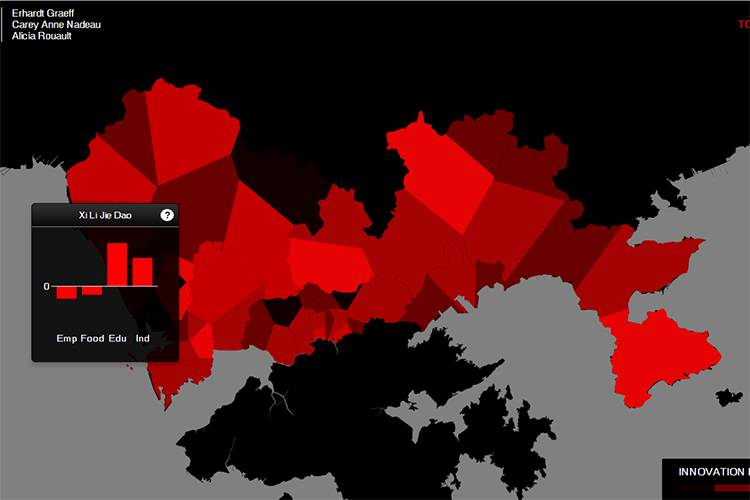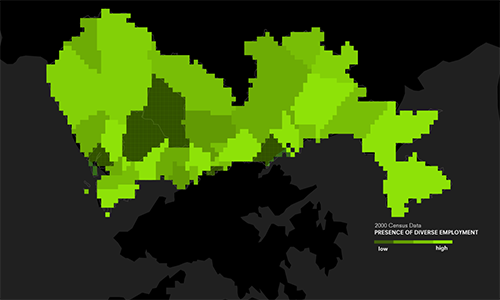In The Mix 在交互中

Project Description
Erhardt Graeff, Carey Anne Nadeau, Alicia Rouault
We visualize data from the popular social media platform Weibo, along with 2000 Census data on four indicators representing potential innovation in Shenzhen, China. The premise of this index is that young, hip Weibo users can be a proxy for the location of an emergent “creative class”—characterized by diversity of workers and industries, access to cultural amenities and key infrastructure. Diverse and accessible places cultivate innovation and information spillover. Exploring 2000 Census data on what industry workers are employed in by township, we see the mix of workers that live in Shenzhen. 2013 Weibo check-ins provide a contemporary proxy for what young creatives might experience near libraries, public transportation, food and drink venues.
年輕時尚的微博用戶往往意味著城市“創新階層”的聚集-他們工作於多種行業,靠近文化設施,而這正是促進城市創新和資訊共用的關鍵。我們利用微博開來源資料與2000年人口普查資料構造了四個城市創新指數: 利用人口資料,我們看到深圳的不同產業的從業者在街道/鄉鎮尺度上的混合和多樣化; 而微博簽到資料則展現了創新群體使用文化設施的方式。


